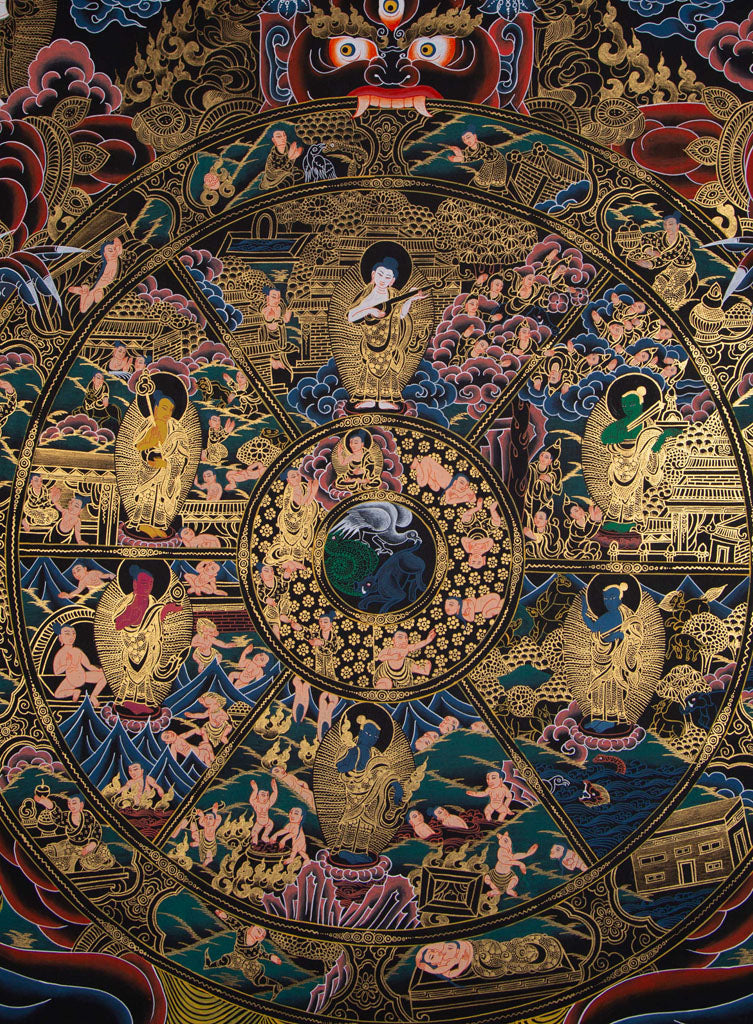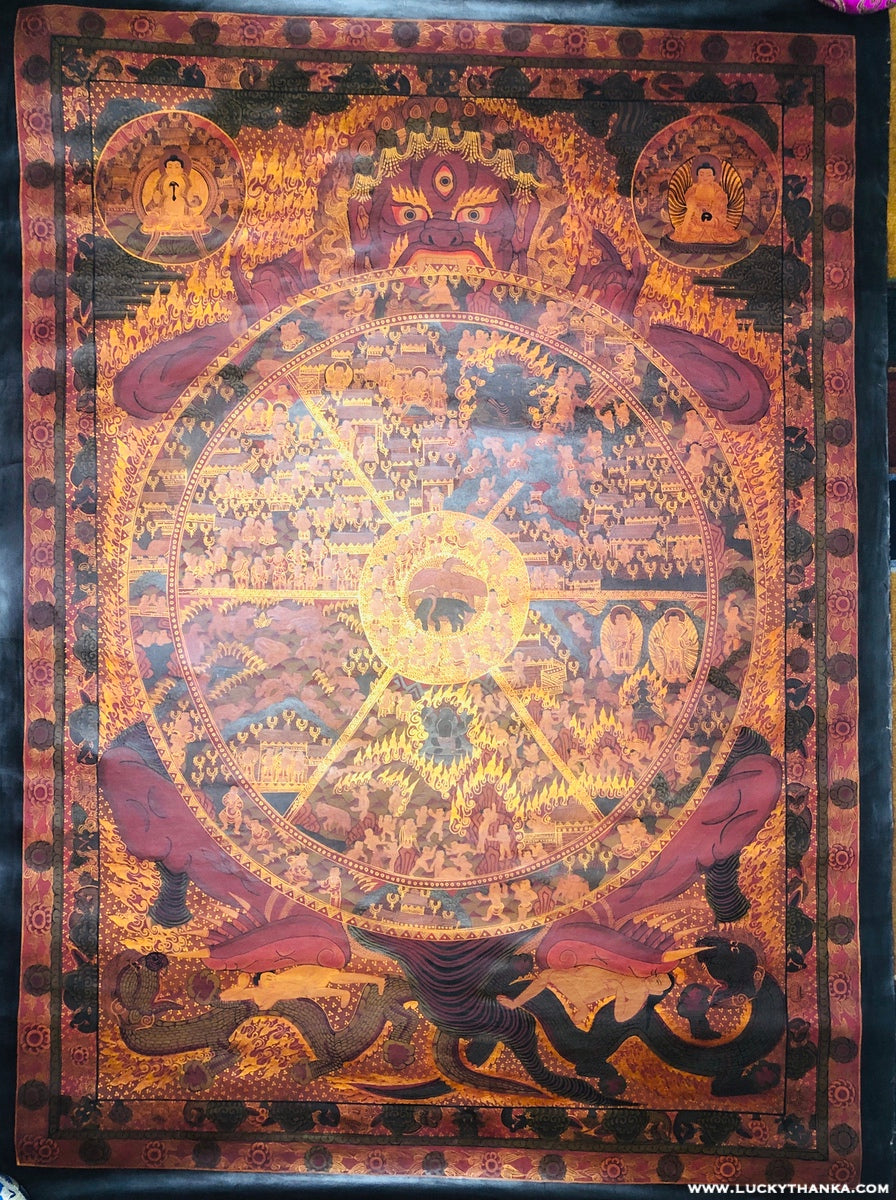
Legend has it that the historical Buddha himself created the first depiction of the bhavacakra, and the story of how he gave the illustration to King Rudrāyaṇa appears in the anthology of Buddhist narratives called the Divyāvadāna.

Also, the edges of the canvas are not always cleanly cut. One problem is that the paint touches the glass and may stick after some years. If the size is good and the background cardboard is of right color, they can look quite good. Ready-made frames are an affordable way to quickly frame a thangka. It may be possible to find special UV-glass to protects the paints from ultraviolet rays. It is very important to protect the painting from direct sunlight. We sometimes tried matte glass to avoid reflecting light, but didn't like the result much. For the people, who can afford the absolute best, there is special non-reflecting glass, which is even difficult to see. We, ourselves, use a glass with every framed thangka. Cleaning, protecting, moving and preserving the thangka becomes easier. The drawback of using a glass is reflecting light, but it has many benefits. The thangkas can be framed with or without a glass. Also it would be better if the framer didn't use glue to fix the painting.


All the thangkas have a 1 inch border, usually red, which will be hidden behind the cardboard frame. This can be done with a colored cardboard frame between the glass and the painting (the red inner frame in the photo). It would be better if the paints do not touch the glass. There are some important things that you don't necessarily get from an average framing shop without asking: All cardboard should be acid-free. Generally made of wood, often painted with gold, custom hard frames give the best protection for a thangka and are many times the only possibility with higher quality artworks.

Some guidelines below from the Tibet Shop (Finland). In Europe and the United States it is hard to find the thangka painter to frame your Thangkas so Thangkas without a brocade require some kind of frames. Thangkas are traditionally framed with brocade in Tibet and Nepal.


 0 kommentar(er)
0 kommentar(er)
